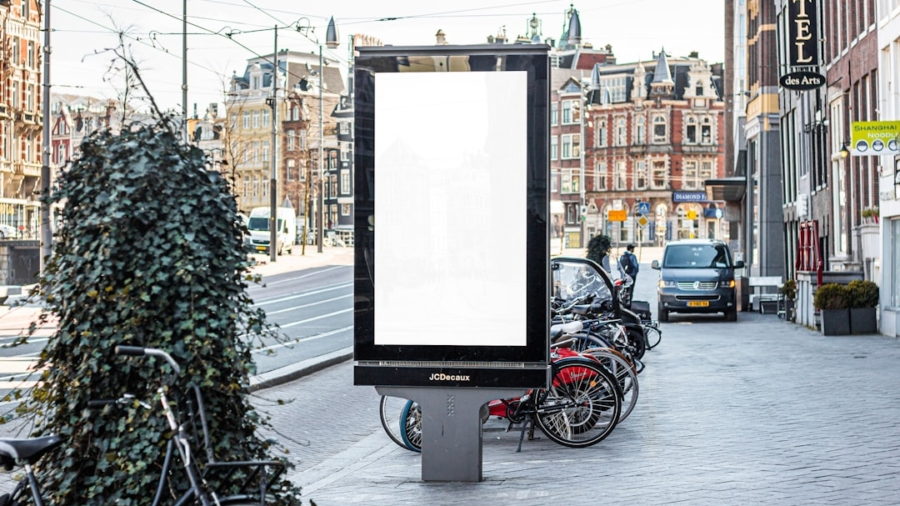Augmented Reality (AR) has emerged as a transformative technology in the realm of digital advertising, blending the physical and digital worlds to create immersive experiences for consumers. By overlaying digital information onto the real world, AR allows brands to engage their audiences in innovative ways that were previously unimaginable. This technology has gained traction due to the proliferation of smartphones and tablets, which serve as platforms for AR applications.
As consumers increasingly seek interactive and personalized experiences, advertisers are leveraging AR to capture attention and foster deeper connections with their target demographics. The integration of AR into digital advertising strategies is not merely a trend; it represents a fundamental shift in how brands communicate with consumers. Traditional advertising methods often rely on passive consumption, where audiences are bombarded with messages without any interaction.
In contrast, AR invites users to participate actively in the experience, allowing them to visualize products in their own environments or interact with brand narratives in real-time. This shift towards engagement is particularly significant in an era where consumers are inundated with information and have developed a tendency to tune out conventional advertisements.
Key Takeaways
- AR in digital advertising enhances user engagement and interaction by overlaying digital content onto the real world.
- The benefits of using AR in digital advertising include increased brand awareness, improved customer experience, and higher conversion rates.
- Potential risks of using AR in digital advertising include technical glitches, privacy concerns, and the need for high-quality content creation.
- AR is changing the landscape of digital advertising by providing immersive and interactive experiences for consumers, leading to more effective marketing campaigns.
- Successful examples of AR in digital advertising include IKEA’s AR app for visualizing furniture in a room and Snapchat’s AR filters for brand promotion.
The Benefits of Using AR in Digital Advertising
One of the most compelling advantages of AR in digital advertising is its ability to enhance consumer engagement.
For instance, a furniture retailer might use AR to allow customers to visualize how a particular sofa would look in their living room before making a purchase.
This not only helps consumers make informed decisions but also creates a memorable interaction with the brand, increasing the likelihood of conversion. Moreover, AR can significantly improve brand recall and recognition. When consumers engage with an AR experience, they are more likely to remember the brand associated with that experience.
A study conducted by the marketing firm Nielsen found that AR ads can increase brand recall by up to 70% compared to traditional ads. This heightened recall is crucial in a competitive marketplace where consumers are bombarded with countless messages daily. By creating unique and engaging AR experiences, brands can differentiate themselves and leave a lasting impression on their audience.
The Potential Risks of Using AR in Digital Advertising

Despite its numerous benefits, the use of AR in digital advertising is not without its challenges and risks. One significant concern is the potential for privacy violations. As AR applications often require access to a user’s camera and location data, there is an inherent risk that sensitive information could be misused or inadequately protected.
Brands must navigate these privacy concerns carefully, ensuring that they comply with regulations such as the General Data Protection Regulation (GDPR) while also being transparent about data usage. Another risk associated with AR advertising is the possibility of technical issues that could lead to a poor user experience. If an AR application fails to function correctly or is difficult to use, it can frustrate users and damage the brand’s reputation.
For example, if a consumer attempts to use an AR feature to visualize a product but encounters glitches or slow loading times, they may associate those negative experiences with the brand itself. Therefore, it is essential for companies to invest in robust technology and thorough testing before launching AR campaigns.
How AR is Changing the Landscape of Digital Advertising
The advent of AR technology is fundamentally altering the landscape of digital advertising by shifting the focus from passive consumption to active participation. This transformation is evident in how brands are rethinking their marketing strategies to incorporate immersive experiences that resonate with consumers on a deeper level. As traditional advertising methods become less effective in capturing attention, AR offers a fresh approach that aligns with modern consumer expectations for interactivity and personalization.
Furthermore, AR is enabling brands to create more targeted and relevant advertising experiences. By leveraging data analytics and user behavior insights, companies can tailor their AR campaigns to specific audience segments, ensuring that the content resonates with individual preferences and needs. For instance, a cosmetics brand might use AR to allow users to virtually try on different makeup products based on their skin tone and facial features.
This level of personalization not only enhances user satisfaction but also increases the likelihood of conversion by providing consumers with tailored recommendations.
Successful Examples of AR in Digital Advertising
Several brands have successfully harnessed the power of AR in their digital advertising campaigns, showcasing its potential to engage consumers effectively. One notable example is IKEA’s “IKEA Place” app, which allows users to visualize how furniture items would look in their homes using AR technology. By simply pointing their smartphone cameras at their living spaces, users can see 3D models of IKEA products superimposed onto their environment.
This innovative approach not only simplifies the decision-making process for consumers but also enhances their overall shopping experience. Another successful implementation of AR in advertising can be seen in the cosmetics industry, particularly through brands like L’Oréal and Sephora. These companies have developed AR applications that enable users to virtually try on makeup products before purchasing them.
By using facial recognition technology, these apps allow consumers to see how different shades of lipstick or eyeshadow would look on their faces in real-time. This interactive experience not only boosts consumer confidence in their purchasing decisions but also encourages social sharing, as users often post their virtual makeovers on social media platforms.
The Future of AR in Digital Advertising

As technology continues to evolve, the future of AR in digital advertising appears promising and full of potential. With advancements in hardware capabilities, such as improved smartphone cameras and faster processing speeds, AR experiences are becoming increasingly sophisticated and accessible. This evolution will likely lead to more seamless integrations of AR into everyday consumer interactions, making it a standard component of digital advertising strategies.
Moreover, as artificial intelligence (AI) continues to advance, we can expect even more personalized and contextually relevant AR experiences. AI algorithms will enable brands to analyze consumer behavior more effectively and deliver tailored content that resonates with individual preferences. For instance, an outdoor apparel brand might use AI-driven insights to recommend specific products based on a user’s location and weather conditions while providing an immersive AR experience that showcases those products in action.
Best Practices for Implementing AR in Digital Advertising
To maximize the effectiveness of AR in digital advertising, brands should adhere to several best practices when implementing this technology into their campaigns. First and foremost, it is crucial to prioritize user experience by ensuring that AR applications are intuitive and easy to navigate. A seamless user interface will encourage engagement and minimize frustration among users who may be unfamiliar with AR technology.
Additionally, brands should focus on creating high-quality content that adds value to the consumer experience. Whether through informative tutorials or entertaining narratives, the content should resonate with the target audience and enhance their understanding of the product or service being advertised. Collaborating with skilled designers and developers can help ensure that the visual elements are polished and engaging.
Furthermore, brands should consider integrating social sharing features into their AR experiences. Encouraging users to share their interactions on social media platforms can amplify brand visibility and reach new audiences organically. By creating shareable moments within the AR experience, brands can leverage user-generated content as a powerful marketing tool.
Navigating the Opportunities and Risks of AR in Digital Advertising
The integration of augmented reality into digital advertising presents both exciting opportunities and potential risks for brands looking to engage consumers in innovative ways. As this technology continues to evolve, advertisers must remain vigilant about privacy concerns while also ensuring that they deliver high-quality experiences that resonate with their audiences. By embracing best practices and learning from successful case studies, brands can navigate this dynamic landscape effectively.
Ultimately, the future of digital advertising will likely be shaped by those who can harness the power of augmented reality while balancing creativity with responsibility. As consumers increasingly seek interactive and personalized experiences, brands that invest in AR technology will be well-positioned to capture attention and foster lasting connections with their audiences in an ever-changing marketplace.
In the rapidly evolving landscape of digital advertising, augmented reality (AR) is emerging as a powerful tool, offering both exciting opportunities and potential risks.
This trend is not only reshaping advertising strategies but also influencing the development of new devices that support such advanced functionalities. For instance, the Samsung Galaxy Chromebook is a device that exemplifies the integration of cutting-edge technology to unlock new possibilities in various fields, including digital advertising. To learn more about how this device is paving the way for future innovations, you can read the related article here.
FAQs
What is AR in digital advertising?
AR, or augmented reality, in digital advertising refers to the use of technology to overlay digital content such as images, videos, or 3D models onto the real world. This allows users to interact with the digital content in a real-world environment through their smartphones, tablets, or AR glasses.
What are the opportunities of AR in digital advertising?
– Enhanced user engagement: AR experiences can captivate and engage users in a more immersive way, leading to increased brand awareness and customer interaction.
– Interactive product experiences: AR can allow users to visualize and interact with products in a virtual space, leading to increased purchase intent and customer satisfaction.
– Data collection and analytics: AR can provide valuable data on user interactions and behaviors, allowing advertisers to better understand their audience and optimize their campaigns.
What are the risks of AR in digital advertising?
– Technical limitations: AR experiences may require specific hardware or software, limiting the reach of the advertising campaign.
– Privacy concerns: AR technology may raise privacy issues as it collects data on user interactions and behaviors in the real world.
– User experience challenges: Poorly executed AR experiences can lead to user frustration and negative brand perception.
How is AR being used in digital advertising?
AR is being used in digital advertising in various ways, including:
– Virtual try-on experiences for fashion and beauty products
– Interactive product demonstrations for consumer goods
– Location-based AR experiences for retail and entertainment
– Gamified advertising experiences for engagement and brand awareness.

